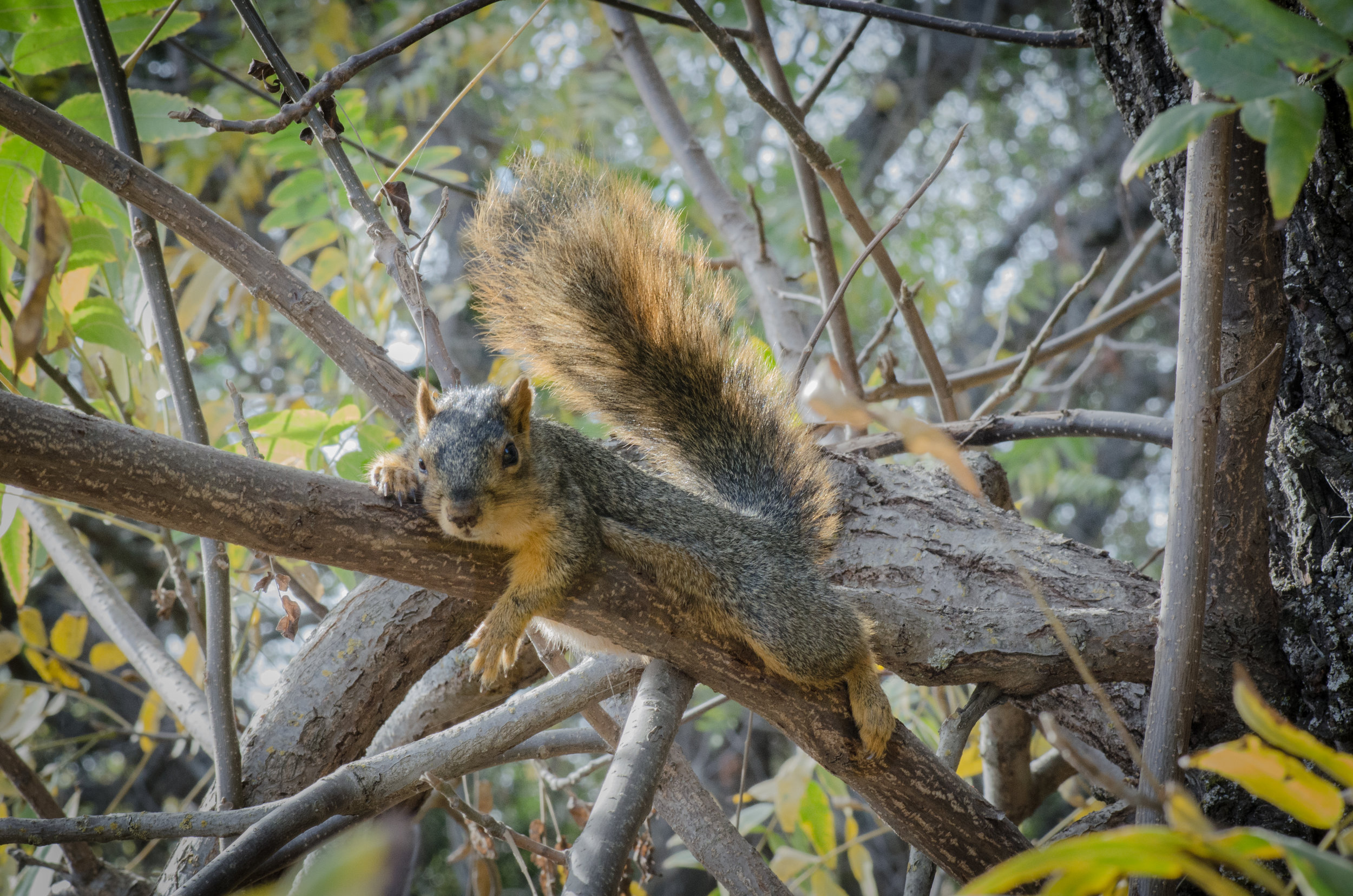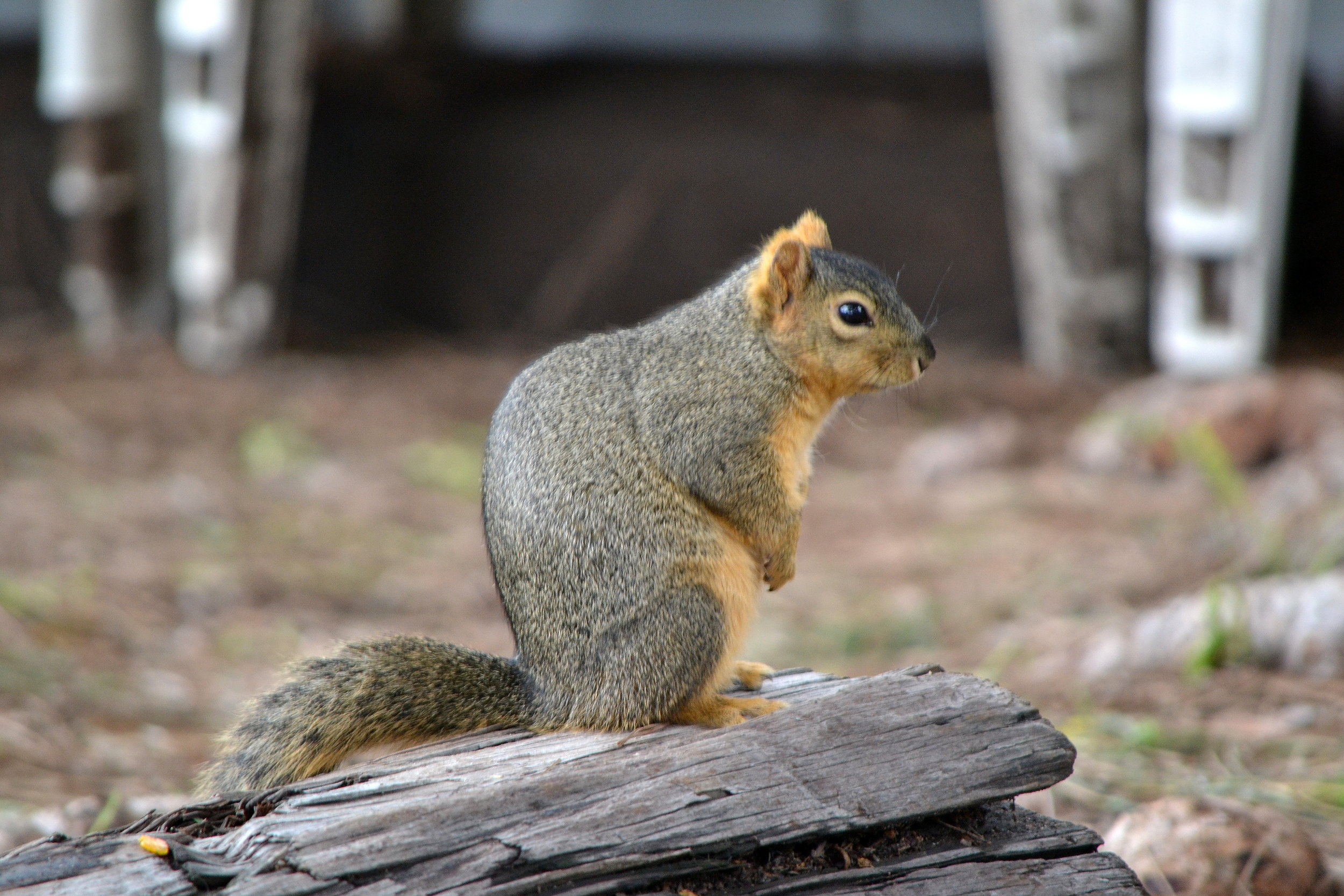Fox Squirrel
The fox squirrel (Sciurus niger), also known as the eastern fox squirrel or Bryant's fox squirrel, is the largest species of tree squirrel native to North America. Despite the differences in size and coloration, they are sometimes mistaken for American red squirrels or eastern gray squirrels in areas where the species co-exist.
The squirrel's total body length measures 17.7 to 27.6 in, tail length is 7.9 to 13.0 in, and they range in weight from 1.1 to 2.2 lb. There is no sexual dimorphism in size or appearance. Individuals tend to be smaller in the west. There are three distinct geographical phases in coloration: In most areas the animals upper body is brown-grey to brown-yellow with a typically brownish-orange underside, while in eastern regions such as the Appalachians there are more strikingly-patterned dark brown and black squirrels with white bands on the face and tail. In the south can be found isolated communities with uniform black coats. To help with climbing, they have sharp claws, developed extensors of digits and flexors of forearms, and abdominal musculature. Fox squirrels have excellent vision and well-developed senses of hearing and smell. They use scent marking to communicate with other fox squirrels. "Fox squirrels also have several sets of vibrissae, thick hairs or whiskers that are used as touch receptors to sense the environment. These are found above and below their eyes, on their chin and nose, and on each forearm."
The fox squirrel's natural range extends throughout the eastern United States, north into the southern prairie provinces of Canada, and west to the Dakotas, Colorado, and Texas. They are absent (except for vagrants) in New England, New Jersey, most of New York, as well as northern and eastern Pennsylvania. They have been introduced to both northern and southern California, Oregon, Idaho, Montana, Washington, and New Mexico. While very versatile in their habitat choices, fox squirrels are most often found in forest patches of 40 hectares or less with an open understory, or in urban neighborhoods with trees. They thrive best among oak, hickory, walnut, and pines, storing their nuts for winter. Western range extensions in Great Plains regions such as Kansas are associated with riverine corridors of cottonwood. A subspecies native to several eastern US states is the Delmarva fox squirrel (S. n. cinereus).

By Franco Folini. CC BY-SA 2.0, via Flickr

By Tracie Hall. CC BY-SA 2.0, via Flickr
